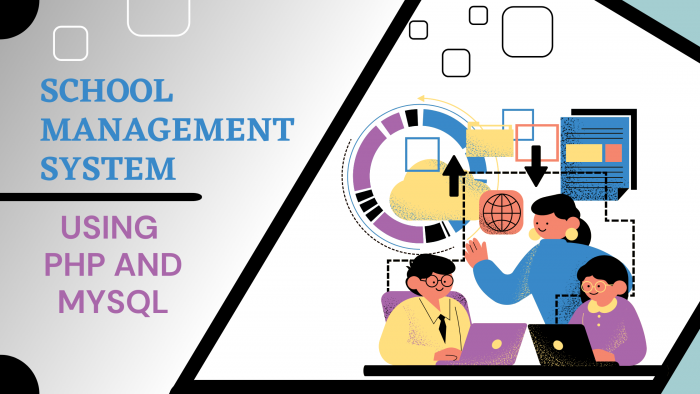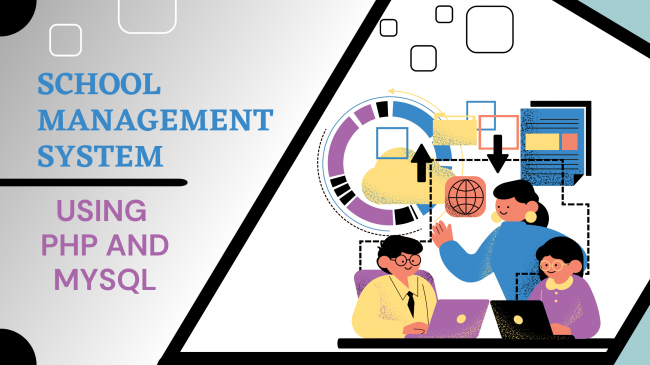Want to create a school management system using PHP and MySQL? This step-by-step guide will help you build a robust system that meets your school's needs.
Managing a school can be a daunting task, but with the right tools, it can be made easier.

A school management system built with PHP and MySQL can help automate many of the tasks involved in running a school, from tracking student attendance to managing grades and assignments.
In this guide, we'll walk you through the steps to create a school management system that meets your school's unique needs.
Plan and Design Your System.
Before you start coding, it's important to plan and design your school management system. It will help ensure that you build a system that meets your school's specific needs.
Start by identifying the key features and functionalities you want your system to have, such as student registration, attendance tracking, grade management, and report generation.
Then, create a detailed plan for how these features will be implemented in your system. This could include creating flowcharts, wireframes, and user stories to help visualize the system's architecture and user experience.
Once you have a solid plan in place, you can start building your system with confidence.
Set Up Your Database.
The first step in creating a school management system using PHP and MySQL is to set up your database. It will involve creating a new database in MySQL and defining the tables and fields that will store your school's data.
You'll need to decide on the structure of your database, including the relationships between tables and the types of data that will be stored in each field.
Once you have your database set up, you can start building the PHP code that will interact with it to create, read, update, and delete data. It will involve using SQL queries to retrieve and manipulate data from your database, as well as PHP functions to process and display that data in your system's user interface.
Create User Authentication and Authorization.
One important aspect of any school management system is user authentication and authorization. This means that users will need to log in with a username and password to access the system, and their access will be restricted based on their role within the school (e.g. teacher, student, administrator).
To create this functionality, you'll need to add a login form to your system's user interface and write PHP code to validate the user's credentials against the database.
You'll also need to define user roles and permissions in your database and use PHP code to enforce those permissions throughout the system. It will ensure that users can only access the parts of the system that they are authorized to use.
Build the Core Functionality of Your System.
Once you have defined the requirements for your school management system, it's time to start building the core functionality. It will involve creating the database schema, designing the user interface, and writing the PHP code that will power the system.
Start by creating the database tables that will store information about students, teachers, classes, and other important data. Then, design the user interface using HTML, CSS, and JavaScript to create a user-friendly experience.
Finally, write the PHP Scripts that will handle user input, validate data, and interact with the database to perform CRUD (Create, Read, Update, Delete) operations.
With these core components in place, you'll be well on your way to creating a robust school management system using PHP and MySQL.
Test and Deploy Your System.
Once you have built your school management system using PHP and MySQL, it's important to thoroughly test it before deploying it to your school's servers.
This will involve testing all of the system's functionality, including user input validation, database interactions, and error handling.
You should also test the system under different load conditions to ensure that it can handle the number of users and transactions that your school requires.
Once you are satisfied that the system is working correctly, you can deploy it to your school's servers and begin using it to manage your school's operations.
How does the school management system (SMS) benefit educational institutions?
As the education system advances, it is crucial to adapt to technological advancements, and one of the tools developed for educational institutions is the school management system (SMS). This system caters to the efficiency of running a school or college by automating administrative tasks.
These are some of the benefits of using an SMS:
1. Enhanced communication: SMS facilitates real-time interactions between staff, students, and parents through alerts, emails, and notifications. This eliminates the need for manual communication procedures and ensures convenience and accuracy.
2. Improved record-keeping: Schools utilize various paperwork for tracking data, making it challenging to maintain accurate records. With SMS, institutions can manage student records, financial data, and administrative documents, ensuring efficient tracking.
3. Streamlined administrative tasks: One of the significant benefits of using an SMS is its ability to automate administrative workflows. Educational institutions can manage admissions, attendance, time tables, payroll, and budget allocation without human error, reducing the workload of administration staff.
4. Access to real-time information: School management systems offer real-time data analytics, making it easy for education leaders to monitor performance in attendance, financials, academic grades, and other factors.
5. Enhanced Parent-teacher collaboration: SMS improves the relationship between parent and teacher by providing easy access to academic performance reports, attendance records, and other essential updates.
Parents can communicate with teachers quickly and participate in their children's learning development, ensuring successful learning outcomes.
Final Words.
Creating a school management system using PHP and MySQL can seem overwhelming, but with the right steps, any programmer can accomplish it. This system can help manage student records, class schedules, grading, and much more.
The school management system can be sophisticated, and it requires knowledge and expertise to be built and operated efficiently. Therefore, it is essential to update yourself with the advanced technology and newer versions of PHP and MySQL to develop and maintain high performing systems.











